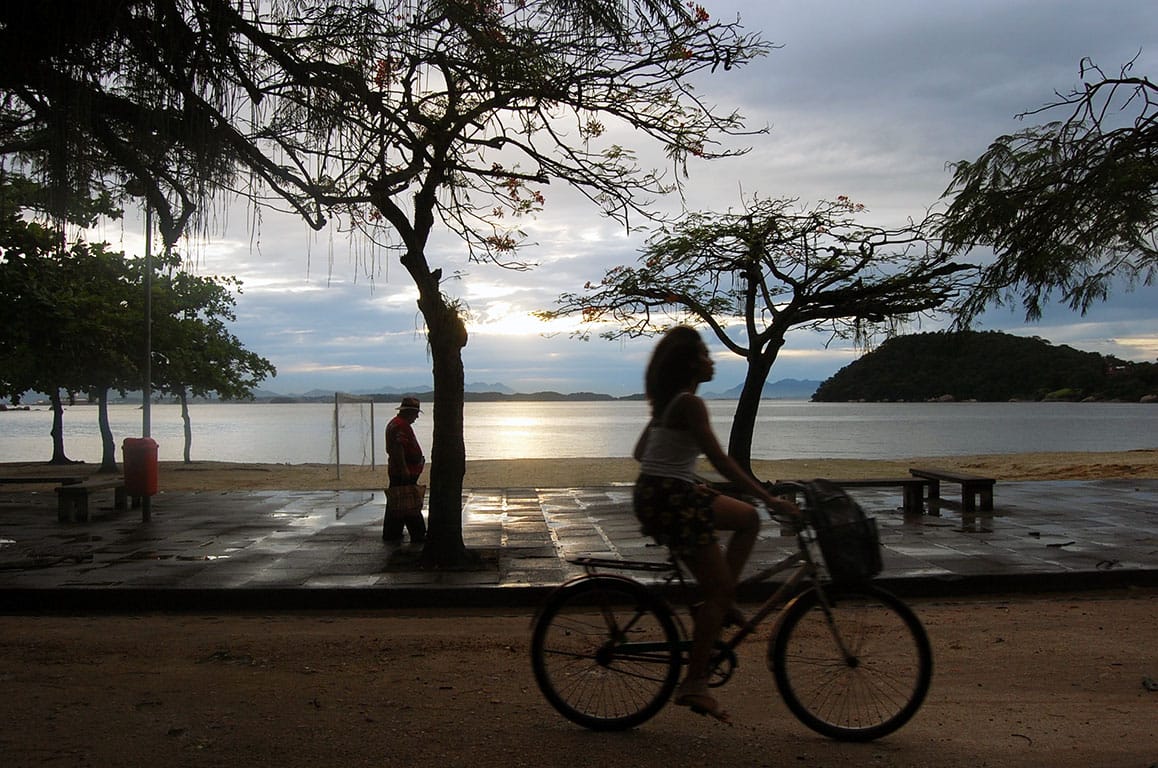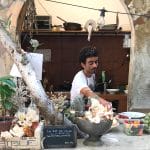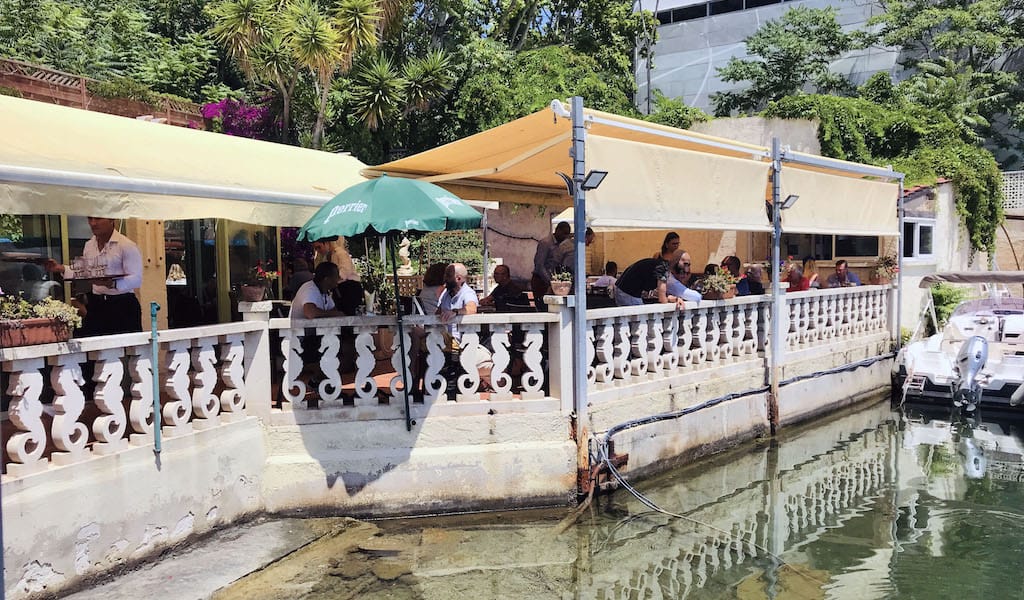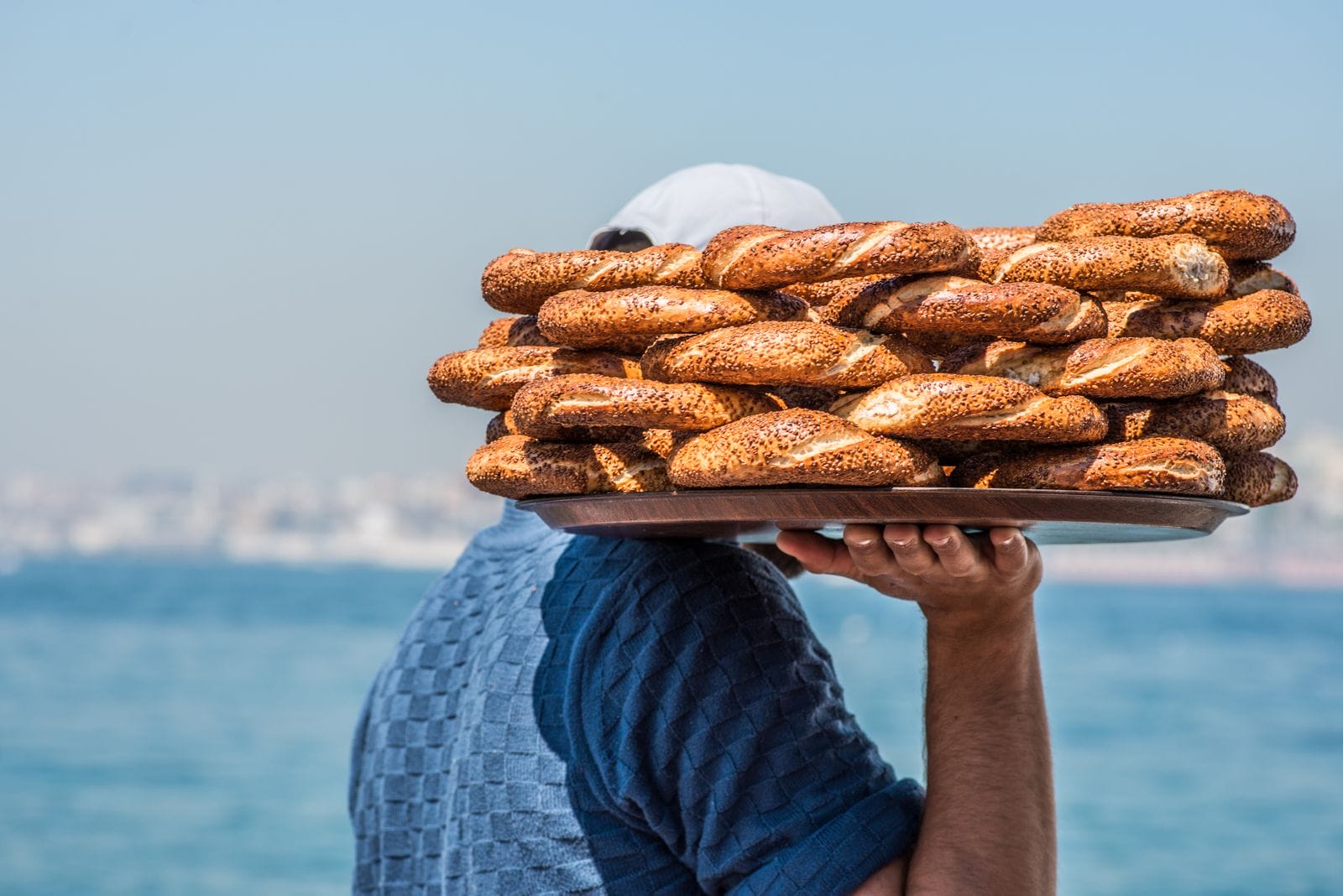Watching residents of Paquetá Island between the turnstiles and gate to get their ferryboat home from Rio’s central Praça XV port is like watching horses chomp at the bit before their stable doors are opened. The 5,000 proud homebodies of Rio’s little car-less island in the center of Guanabara Bay are anxious to get back to it, often pulling tall shopping carts stacked with beer and snacks. There’s only one small grocery store on the island and what gets here, gets here by boat and human hands.
The ferry is a destination as much as a journey for those who want to appreciate one of Rio’s most unique little corners. You’ll question the quiet here and remember that this city of 14-lane highways is set to a constant soundtrack of engines and “PORRA!” (Pronounced POU-hah, this is a ubiquitous carioca curse you’ll hear when someone’s mildly upset or surprised, a much saltier version of “damn it!”)
Passengers on the Paquetá ferry know boat captains by the sound of their voice over the loudspeaker (“This commander is a good one”). Open containers being the law of the land in Rio, people drink beer onboard and shout in unison as they watch updates from the Flamengo futbol team’s game on their cell phones. After a 40-minute ride through Rio’s industrial port, the ferry arrives at an island of pastel-colored homes, thick with trees that offload swollen mangos onto the dirt streets below. The snaggled peaks of Rio’s Região Serrana suburb are visible in a suede blue silhouette on the horizon.
Your modes of transport from here on out will be bicycle rickshaw or an odd tractor that pulls a long wagon, reminiscent of cars that take families around amusement parks. The whole town of cobblestone or dirt roads with one-story homes and pousadas looks like it could use a scrubbing, but if you ask its doting locals, it’s perfect the way it is.
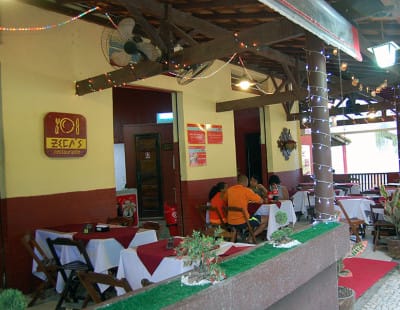 Down one of those bumpy roads can be found Restaurante Zeca, in our minds one of Rio’s top “destination dining” spots. Zeca and his son Maurício have both put in their time in noisier parts of Rio. Zeca grew up in the historical hillside neighborhood of Santa Teresa, once a refuge where European colonists built mansions to flee the yellow fever and humidity of the city down below, and nowadays a bohemian epicenter. Maurício worked as a nurse in a public hospital in the dense working-class Bonsucesso neighborhood. For them, Restaurante Zeca is the refuge where they spend the day with their neighbors and the Brazilians who make an economic family day trip to rent bicycles on Paquetá.
Down one of those bumpy roads can be found Restaurante Zeca, in our minds one of Rio’s top “destination dining” spots. Zeca and his son Maurício have both put in their time in noisier parts of Rio. Zeca grew up in the historical hillside neighborhood of Santa Teresa, once a refuge where European colonists built mansions to flee the yellow fever and humidity of the city down below, and nowadays a bohemian epicenter. Maurício worked as a nurse in a public hospital in the dense working-class Bonsucesso neighborhood. For them, Restaurante Zeca is the refuge where they spend the day with their neighbors and the Brazilians who make an economic family day trip to rent bicycles on Paquetá.
Zeca’s menu could be described as islander plus pizza, and he’s able to caprichar (be creative) even with the limited supply line coming into Paquetá. He makes Brazilians’ favorite escondidinho – a potpie that usually comes with shrimp, Parmesan and creamy potatoes – with codfish as well. They bring in most of their fish, such as grouper and robalo, a rich white fish more commonly known as snook in English, from the neighboring state of Espírito Santo. Zeca and Maurício had a head-scratcher when they tried to translate pirão – a beloved Brazilian dish of fish broth with ground manioc root mixed in to make it creamy – for their English menu. They simply called it “Brazilian sauce.”
We tried their fluffy omelet with fresh, punchy basil leaves and satisfying to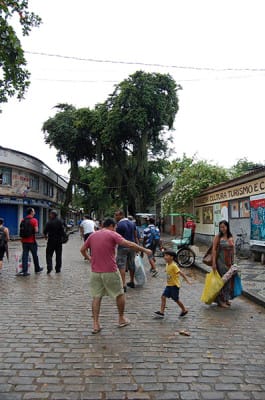 mato wedges – it was the most we wanted in our stomachs before an undulating ride back to town. When we visited, a long line of tables had been arranged for a birthday party, which opted for a classic crowd-pleaser: pizza and beer.
mato wedges – it was the most we wanted in our stomachs before an undulating ride back to town. When we visited, a long line of tables had been arranged for a birthday party, which opted for a classic crowd-pleaser: pizza and beer.
For Zeca and Maurício, something about the isolation and using your feet to get around has an equalizing effect in Paquetá. Zeca calls the kids who crowd around his 81-year-old sun visor-wearing self his “200 grandchildren,” and Maurício says it’s hard to distinguish among people once they put their Paquetá uniform on.
“Here we put on a speedo and flip-flops, and we’re all alike.”
Published on January 28, 2016
Related stories
July 16, 2020
MarseillePerched at Marseille’s northern border along the Mediterranean, the port of L’Estaque once teemed with fishermen. Starting in the 17th century, local pêcheurs would catch sardines, tuna, mackerel and poissons de roches (the rockfish that are essential to the city’s iconic bouillabaisse.) In the 1960s, these independent fishermen were swallowed up by the increase in…
December 16, 2019
MarseilleEditor’s note: We’re celebrating another year of excellent backstreets eating by reflecting on our favorite meals of 2019. Starting things off is a dispatch from Alexis Steinman, our Marseille bureau chief. This year began with a bang, when Marseille nabbed a coveted spot on the New York Times’ “52 Places To Go in 2019” list.…
February 28, 2024
Food Tours NDQuick Bite: This full-day Istanbul market tour draws from our best-of list in the European side’s Karaköy neighborhood and the Asian Kadıköy, tied together by a Bosphorus crossing, visiting two markets on two continents. Our favorite Istanbul experiences include exploring the eateries in local markets and crossing the Bosphorus on the public ferry. The route for…







































